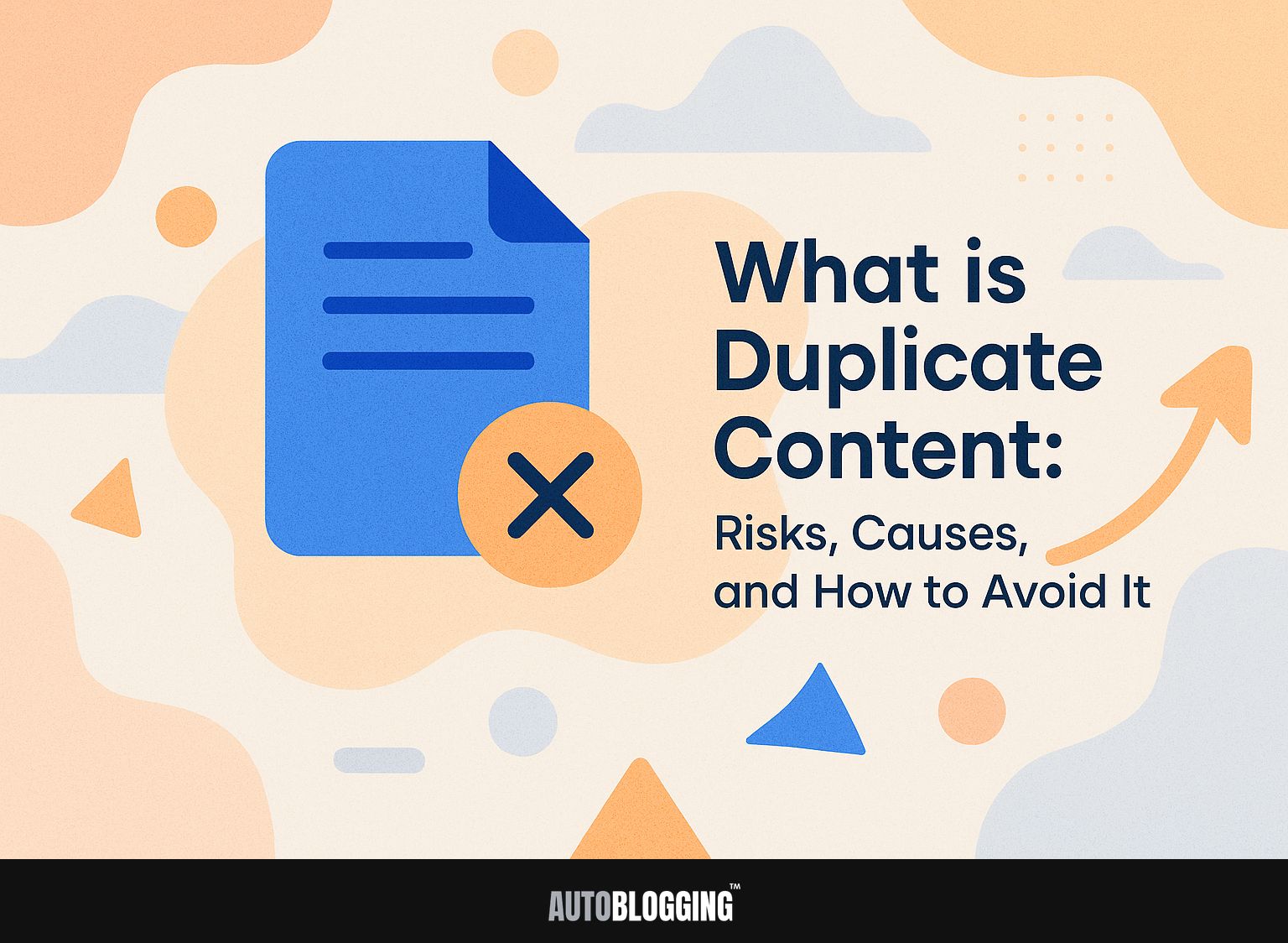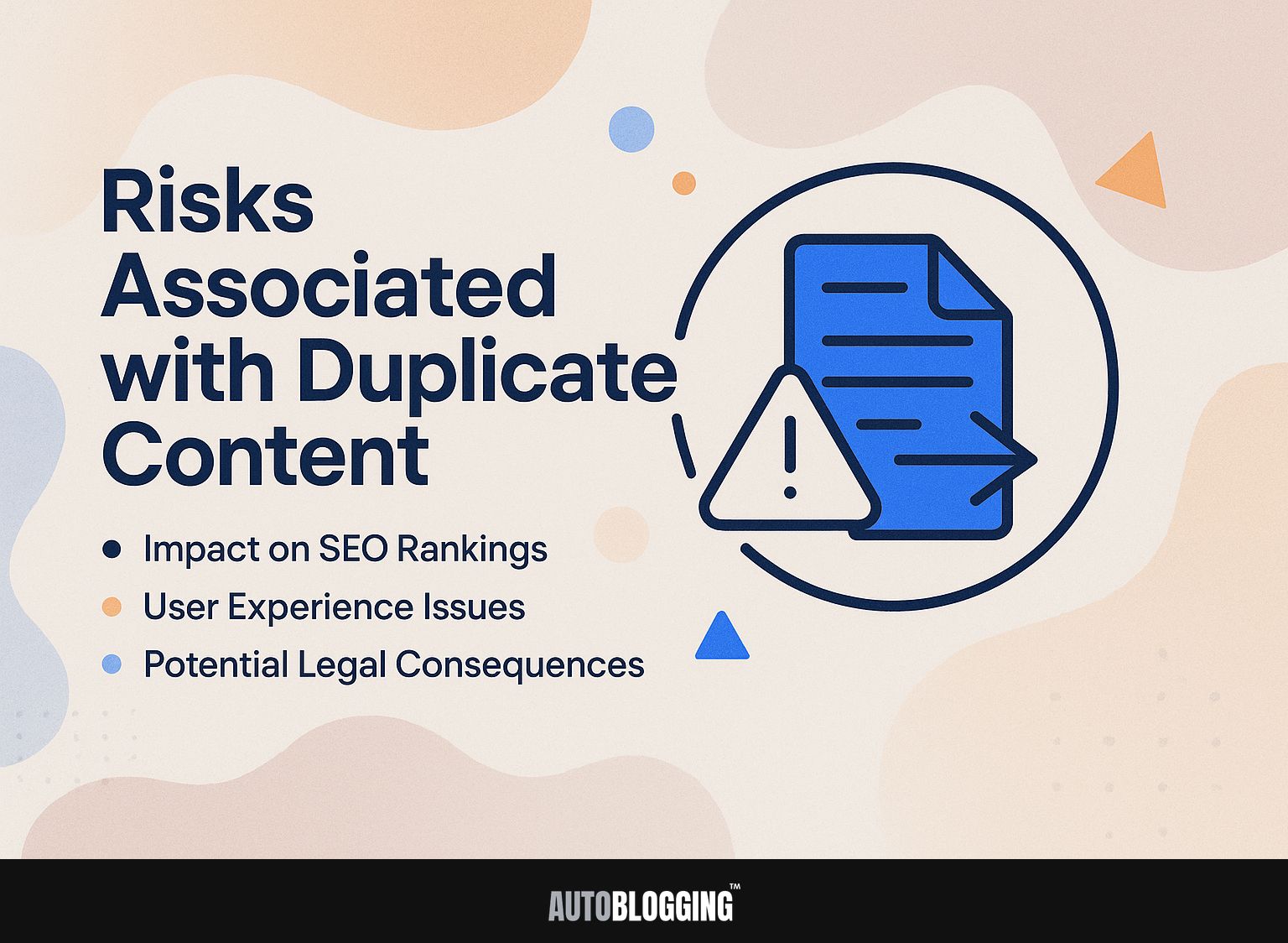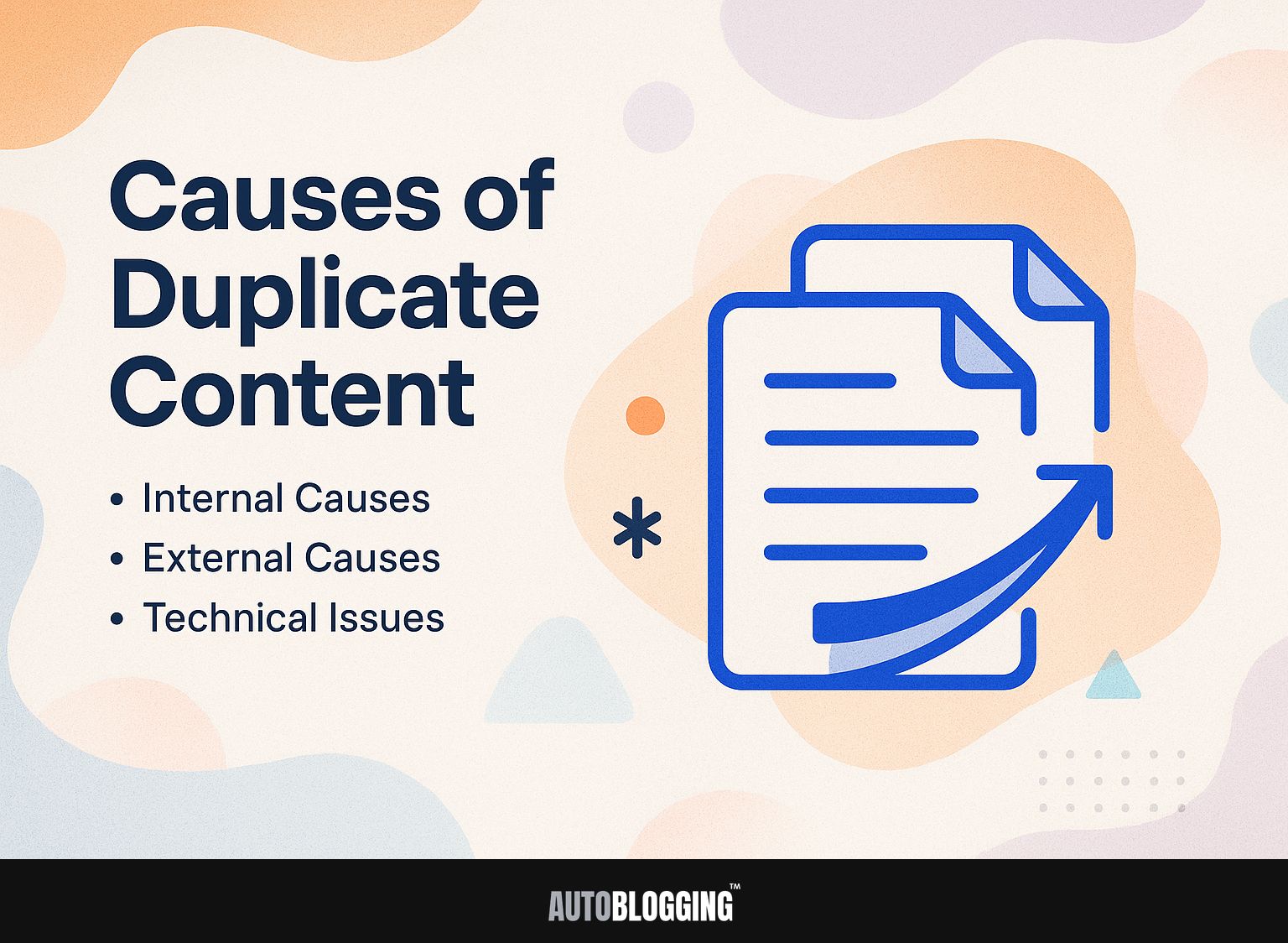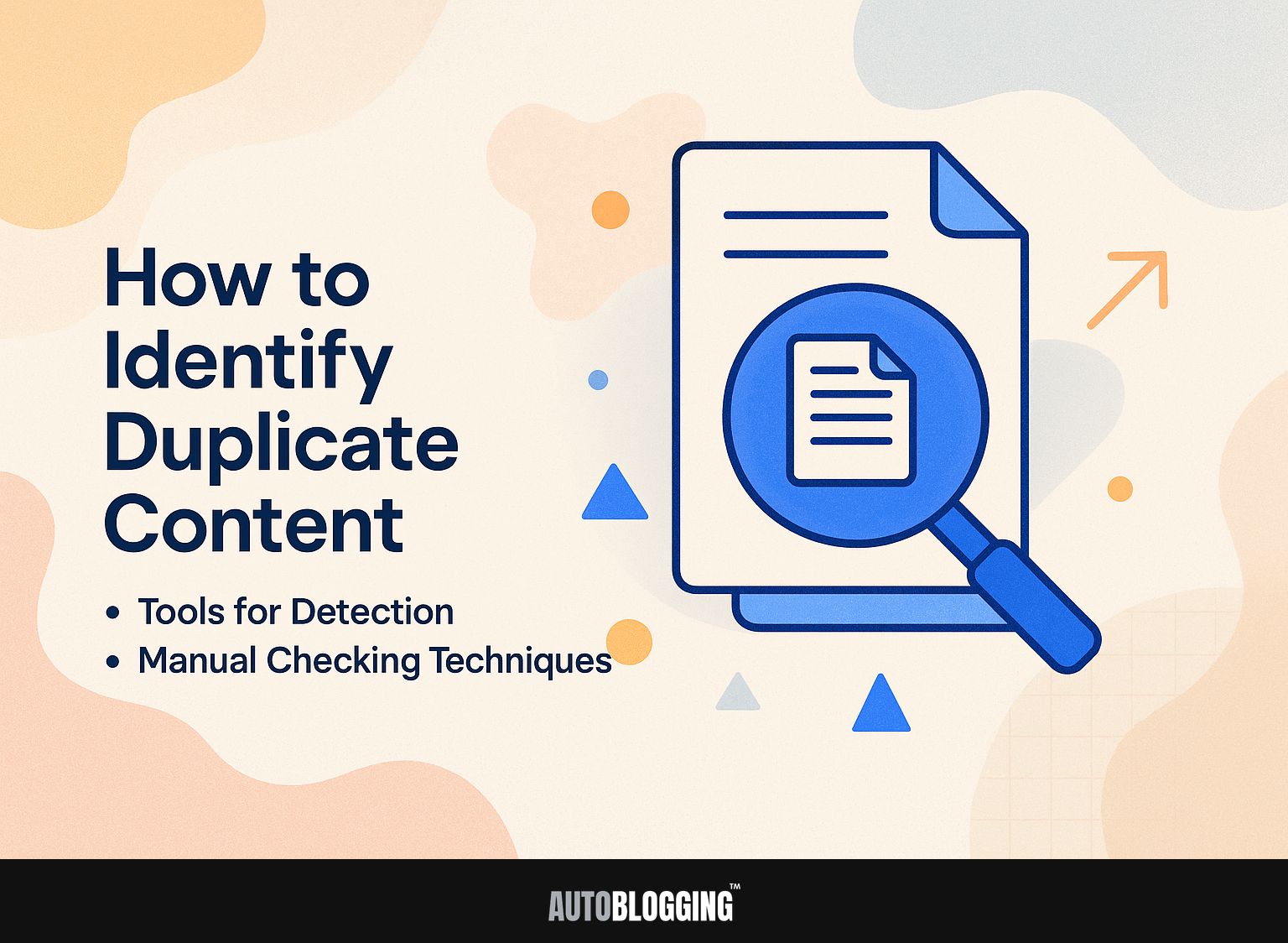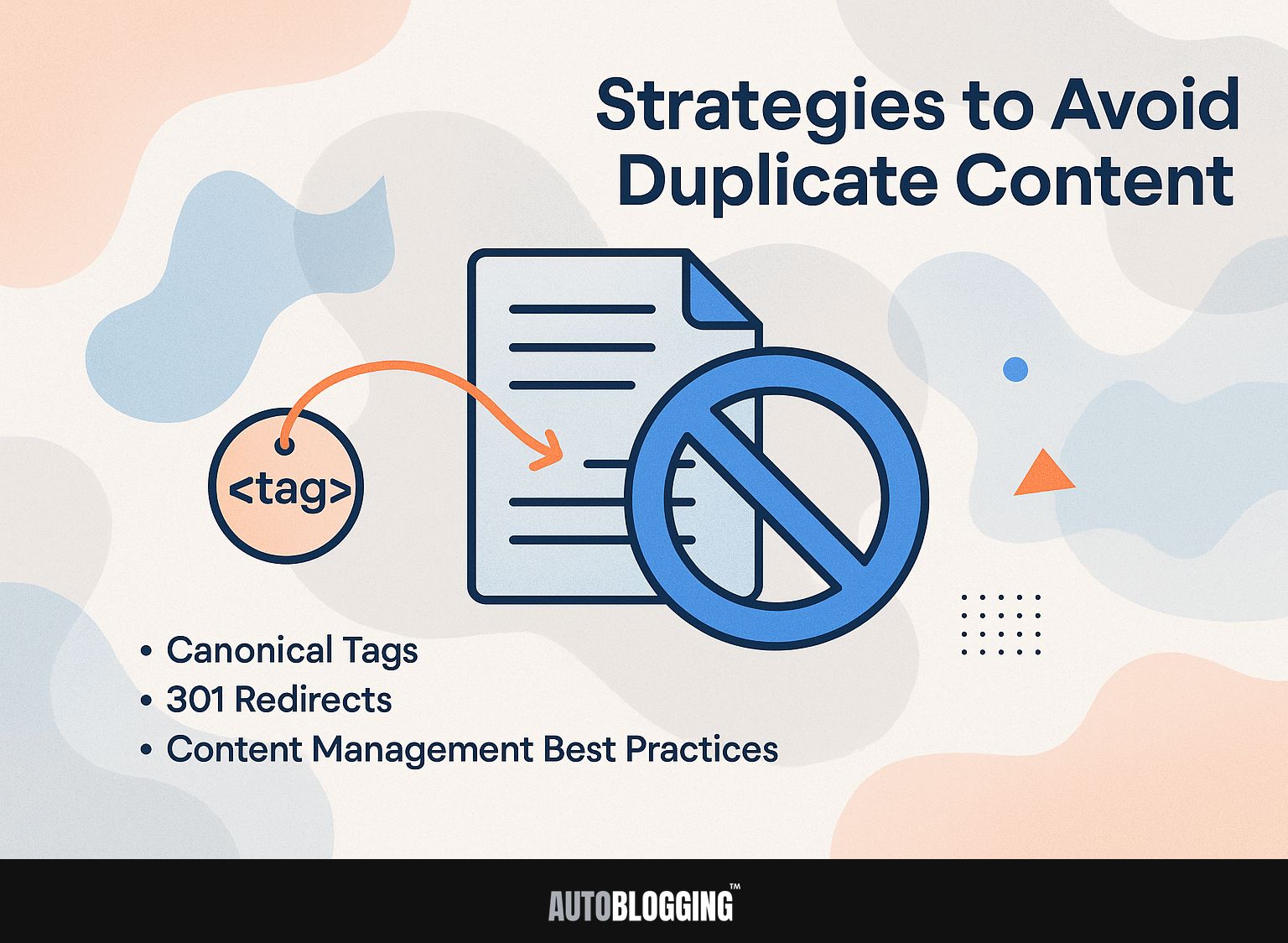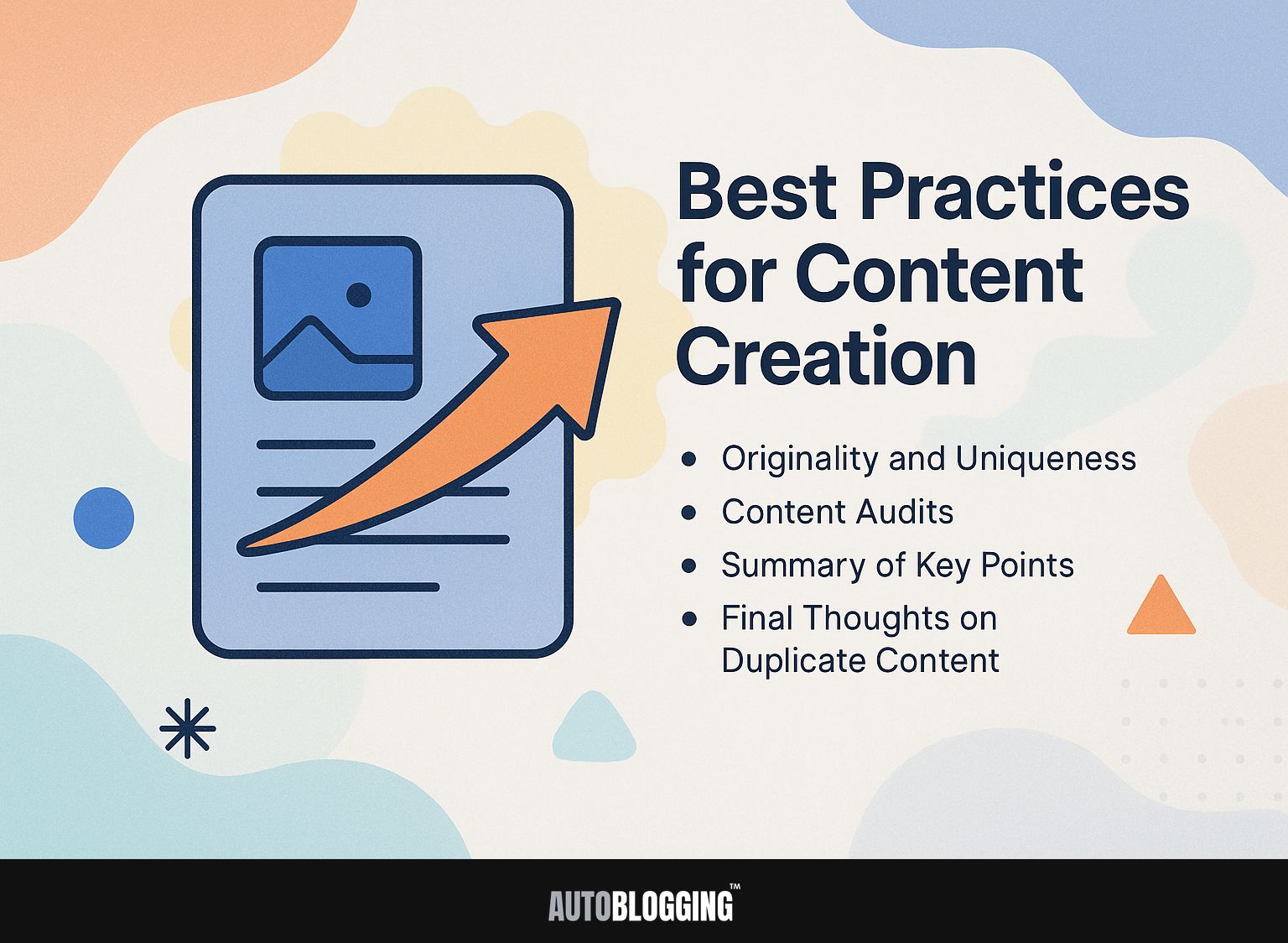Duplicate content can be a silent killer for your SEO efforts, putting your website at risk of a Google penalty. For webmasters, knowing the reasons and effects is important. Tools like Raven and Siteliner can help identify issues, while canonicalization offers a strategy to prevent complications. In this article, we will examine the risks of duplicate content, how it affects your SEO rankings, and simple ways to avoid it, ensuring your content remains unique and helpful.
Key Takeaways:
- Duplicate content can negatively impact SEO rankings, user experience, and even lead to legal consequences.
- Duplicate content can be caused by factors inside the company, outside influences, and technical issues. It’s important to regularly check for and fix duplicate content.
- Techniques like using canonical tags, 301 redirects, and following good content management practices can help to prevent duplicate content and support the creation of original and unique content.
Contents
1. Definition of Duplicate Content
Duplicate content consists of identical webpages that can be found either on the same website or on different websites, causing search engines to struggle with choosing which version to display in search results. There are two primary types of duplicate content: internal and external.
Internal duplicate content occurs within the same website, often due to variations in URL parameters or duplicated posts. External duplicate content appears across different domains, such as when content is shared or scraped by other sites.
For instance, a news article published on multiple news sites can dilute ranking potential. To handle this, use canonical tags to show the main versions and set up 301 redirects to combine duplicate URLs, improving SEO results.
2. Why It’s Important to Know About Duplicate Content
Knowing about duplicate content is important for website managers because it directly impacts SEO plans and search rankings, which can greatly affect organic traffic.
Search engines prioritize unique content, so having identical text on multiple pages can lead to confusion over which page to rank. This can dilute your visibility and result in lower search placements.
To mitigate risks, use tools like Copyscape or Siteliner to identify duplicate content. Implement canonical tags on similar pages to indicate the primary version. Frequently update and change current content to make it unique. This enhances SEO and user experience, resulting in increased interaction.
Risks Associated with Duplicate Content
Copying content can cause problems, such as possible penalties from Google. This can reduce traffic from search engines and lower your site’s SEO ranking. To avoid these issues, consider tools like the Free Duplicate Keywords Remover, which can help maintain content originality and improve SEO performance.
1. Impact on SEO Rankings
Sites with duplicate content can face search ranking penalties from Google, resulting in loss of visibility and a decline in organic traffic.
For instance, in 2011, the lead generation site ‘HubSpot’ reported a significant traffic drop after Google implemented algorithm updates targeting duplicate content. To protect against this issue, use tools like Google Search Console to find and fix duplicate pages.
Regularly review your site to find any duplicate content and make sure each page provides its own unique benefits. Implement canonical tags on essential pages to indicate the original source and avoid penalties.
By regularly organizing your content, you can maintain your rankings and improve how users interact with your site.
2. User Experience Issues
Duplicate content can lead to a poor user experience, confusing visitors and diluting the credibility of a website.
For instance, an e-commerce site with multiple pages for similar products might confuse users about which to choose, resulting in frustration and a potential loss of sales.
Feedback from user surveys often highlights instances where visitors felt disoriented due to the presence of nearly identical product pages.
To improve things, webmasters should use strategies like merging similar items into a single organized page or adding canonical tags to inform search engines which version to prioritize. This method makes the text clearer and enhances SEO outcomes.
3. Potential Legal Consequences
Engaging in content scraping without proper attribution risks legal action, including copyright infringement claims against the website owner.
To avoid these legal pitfalls, consider these key strategies:
- Always use unique content creation methods, such as summarizing information in your own words or integrating data from multiple sources.
- For instance, utilizing tools like Grammarly can help rephrase existing content without losing context.
- Use content checking tools like Copyscape to confirm that the material is unique before publishing.
Notable case studies, such as the Associated Press vs. Meltwater, emphasize the need for proper attribution, pointing out that even brief quotes can lead to legal problems if not managed properly.
Causes of Duplicate Content
Knowing why duplicate content occurs helps website owners fix it and keep their site tidy. Understanding how web crawlers work can also be crucial, as they play a role in identifying duplicate content (our hidden gem on web crawlers explains their impact in detail).
1. Internal Causes
Internal causes of duplicate content often stem from site structure issues, such as pagination and URL variations that generate duplicate pages.
Pagination can create multiple versions of the same content, especially with long articles split across pages. To resolve this, implement rel=”prev” and rel=”next” tags to signal to search engines the correct sequence.
In the same way, having session IDs in URLs can cause repeated content as users move through a site. To combat this, consider using URL parameters to track sessions without altering the core content URL.
Regular checks with tools like Screaming Frog or Sitebulb can find and fix problems, keeping your site ready for search engines.
2. External Causes
External causes of duplicate content often arise from content syndication and scraping by third-party sites, which can dilute original content value.
Use tools like Google Search Console and Copyscape to keep an eye on and manage these duplicates. Set up alerts in Google Search Console for URLs where your content appears, allowing you to track unauthorized use.
Use Copyscape periodically to scan for duplicates online. If you find your content misused, reach out to the offending site with a cease-and-desist request.
If you share our content, please mention our content usage guidelines and include a link back to our site for credit. This proactive approach protects your content’s integrity.
3. Technical Issues
Technical issues such as improper URL formats and lack of canonical tags can inadvertently create duplicate content across a website.
To fix these problems, make sure your website uses the same URL format by setting up 301 redirects from HTTP to HTTPS to prevent having the same pages twice.
Next, use canonical tags to indicate the preferred version of a page, which can be done easily in most content management systems. For example, if you have both a www and non-www version of your site, specify your chosen format in the canonical tag.
Use tools like Google Search Console to find and correct any duplicate content found during crawls.
How to Identify Duplicate Content
Finding repeated content is the first step to fixing it. This is usually done by using both software tools and personal review. If you are interested in understanding the broader implications of duplicate content, such as its potential role in negative SEO strategies, our article on what is negative SEO and how it affects websites could provide valuable insights.
1. Tools for Detection
Tools like Siteliner and Copyscape help webmasters find repeated content fast, saving time and making sites better.
Siteliner (free for up to 250 pages) examines your website, pointing out repeated content and providing information on internal linking, which can help with SEO.
Copyscape (starting at $0.05 per search) allows you to check specific URLs or text for plagiarism across the web.
To use these tools, simply enter your website’s URL into Siteliner or paste your text into Copyscape. Both provide detailed reports that guide you in identifying and rectifying duplicate content, ensuring your site maintains high-quality standards.
2. Manual Checking Techniques
Manually checking, such as using search engine searches and site reviews, helps webmasters find duplicate content that automated tools might miss.
One effective approach is utilizing Google search operators. For instance, you can search for specific phrases within your site by inputting site:yourwebsite.com "example phrase". This method reveals instances of duplicate text.
Check your website regularly by visiting its pages and finding any repeated or matching content. Using tools like Screaming Frog can help you find duplicate content quickly, so you can take fast action to keep your SEO quality.
Strategies to Avoid Duplicate Content
Using strategies such as canonical tags and 301 redirects can greatly lower the chance of duplicate content on a website. For an extensive analysis of this trend, our comprehensive guide on indexing examines how search engines manage duplicate content and ensure proper indexing.
1. Canonical Tags
Canonical tags serve as a directive to search engines, indicating the preferred version of a webpage to avoid duplicate indexing.
To implement canonical tags effectively, add the following HTML code within thesection of your preferred webpage:
For instance, if you have multiple URLs for the same content, like ‘example.com/page’ and ‘example.com/page?ref=123’, use the canonical tag to point to the main version. Make sure your canonical tags point to the same page and are the same on all pages. This helps search engines understand your content structure correctly.
2. 301 Redirects
Website administrators can use 301 redirects to combine different URL versions, directing visitors and link authority to a single main page.
To set up a 301 redirect, you can use your website’s.htaccess file if you’re on an Apache server. Simply add a line in the format:
'Redirect 301 /old-page-url http://www.yoursite.com/new-page-url'
Alternatively, if you’re using a CMS like WordPress, plugins such as Redirection or Yoast can simplify the process. These tools allow you to manage and track your redirects easily, ensuring that users and search engines are directed to the correct content without damaging your SEO efforts.
3. Content Management Best Practices
Effective content management allows for the creation of original work and minimizes duplicate content.
- To improve your content management, review your content twice a year to find and fix any repeated or old materials.
- Initiate training sessions for content creators on best practices, focusing on originality and SEO tactics.
- Advise them to write unique meta descriptions for each piece of content to increase its visibility in search results.
- Use tools like SEMrush to find keywords and Grammarly to check for spelling and grammar. This will help each piece match your brand’s voice and maintain high quality.
Best Practices for Content Creation
Following good practices in creating content is important for keeping it unique and reducing the chances of having similar content. Understanding these practices can be enhanced by exploring what a title tag is, its best practices, and its SEO impact, which is crucial for optimizing your content effectively.
1. Originality and Uniqueness
Writing original content helps with SEO, keeps users interested, and builds brand credibility. To generate original ideas, start by brainstorming topics relevant to your audience’s interests.
Use tools such as BuzzSumo to find popular topics in your specific area. Connect with your audience by using polls or social media to learn what topics they find helpful.
Another technique is the ‘How, Why, What’ method: dissect a common topic by examining its practical applications (How), underlying reasons (Why), and the outcomes (What). This method keeps your content new and focused on what the audience wants.
2. Content Audits
Regular checks of content help find and fix duplicate content problems, providing a smooth user experience and better SEO results.
To perform an effective content audit, start by utilizing tools like Screaming Frog, which allows you to crawl your website and extract metadata. Focus on key metrics such as page titles, meta descriptions, and header tags to spot duplicates.
Next, categorize your content based on performance metrics like organic traffic and bounce rates. This will point out troublesome duplicate content and show which pages need improvement or merging.
Document your findings and set a schedule for regular audits, aiming for at least once a year to keep your content fresh and relevant.
3. Summary of Key Points
Webmasters must understand what duplicate content is, the problems it can cause, and how to handle it properly.
Webmasters can use different techniques to minimize the chance of having duplicate content.
- First, use canonical tags to specify the preferred version of a page when duplicates exist. This signals to search engines which page to prioritize.
- Creating unique and helpful content can significantly cut down on duplication.
- Tools like Copyscape help identify existing duplicates on the web, allowing for timely adjustments.
- Regular checks with tools like Screaming Frog can help keep content accurate and quickly find any duplication problems.
4. Final Thoughts on Duplicate Content
Addressing duplicate content early maintains a site’s search engine ranking and enhances how users interact with and perceive the brand.
To effectively manage duplicate content, consider these actionable steps:
- Start by doing a content review with tools like Screaming Frog or SEMrush to find repeated content.
- Next, implement canonical tags to indicate your preferred URL for search engines.
- Use 301 redirects to lead users and search engines to the original content.
- Regularly revising and adding new information to old content can make pages stand out and offer new information.
By carefully following these strategies, you will keep your SEO strong and create a dependable and interesting online presence.
Additional Resources
To find out more about managing repeated content and improving SEO, take a look at these useful resources created for webmasters.
Consider these reputable sources:
- SEO 2023: Learn Search Engine Optimization by Adam Clarke, which offers practical strategies for reducing duplicate content.
- The online course Advanced SEO: Tactics and Strategy on Udemy covers detailed methods for better organizing site layout and using canonical tags.
Websites like Moz offer detailed articles about duplicate content penalties and ways to prevent them. Using these resources will give you practical information and methods needed to improve your site’s SEO results.
Frequently Asked Questions
1. What is Duplicate Content?
Duplicate content means the same content showing up in multiple places online. It can be found on the same website or on different websites. This can happen unintentionally, or it can be done deliberately for malicious or manipulative purposes.
2. What are the Risks of Duplicate Content?
The main risk of duplicate content is that search engines may penalize your website for it. This can lead to worse search engine results, making it more difficult for people to find your website. Copying content can mislead search engines and harm how users experience your site.
3. What Causes Duplicate Content?
Duplicate content can be caused by a number of factors, such as website design issues, content management system (CMS) settings, or incorrect use of URL parameters. It can also be caused by content being copied and pasted from one page to another, content syndication, or scraping from other websites.
4. How Can I Avoid Duplicate Content on my Website?
To avoid duplicate content, make sure to use unique and original content on your website. Use canonical tags to show the main source of the content and set up the correct redirects as needed. Regularly check for duplicate content on your website and use tools such as Copyscape to identify any potential issues.
5. What if I Find Duplicate Content on my Website?
If you have found duplicate content on your website, it is important to address it immediately. Remove the duplicate content or add canonical tags to indicate the original source. You can also reach out to the website owner and request for the content to be removed or properly attributed to your website.
6. Is All Duplicate Content Bad for SEO?
No, not all duplicate content is bad for SEO. Some duplicate content, such as product descriptions on e-commerce websites, is necessary and can actually improve SEO. Make sure you handle and limit duplicate content on your website to prevent any possible harm to SEO.



